
Helix pomatia, common names are the Roman snail, Burgundy snail, or escargot, is a species of large, air-breathing stylommatophoran land snail native to Europe. It is characterized by a globular brown shell. It is an edible species. Helix pomatia commonly occurs synanthropically throughout its range.

A species that is extinct in the wild (EW) is one that has been categorized by the International Union for Conservation of Nature as only consisting of living members kept in captivity or as a naturalized population outside its historic range. Classification requires exhaustive surveys conducted within the species' known habitat with consideration given to seasonality, time of day, and life cycle. Once a species is classified as EW, the only way for it to be downgraded is through reintroduction.

Discula is a genus of small land snails, terrestrial pulmonate gastropod mollusks in the family Geomitridae.

Bythinella reyniesii is a species of very small freshwater snail, an aquatic gastropod mollusk in the family Amnicolidae.
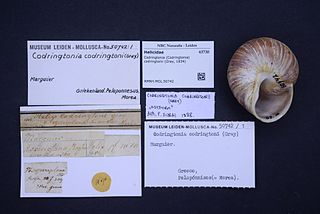
The rock snail, scientific name Codringtonia codringtonii, is a species of air-breathing land snail, a terrestrial pulmonate gastropod mollusk in the family Helicidae, the typical snails.
Cryptosaccus is a genus of air-breathing land snails, terrestrial pulmonate gastropod mollusks in the family Hygromiidae, the hairy snails and their allies.
Leiostyla abbreviata is an extinct species of small air-breathing land snail, a terrestrial pulmonate gastropod mollusk in the family Lauriidae. It is one of several species sometimes referred as Madeiran land snail.
Leiostyla gibba is a species of small, air-breathing land snail, a terrestrial pulmonate gastropod mollusk in the family Lauriidae. This species is mentioned in Annexes II and IV of the Habitats Directive. It is one of several species sometimes referred as Madeiran land snail.
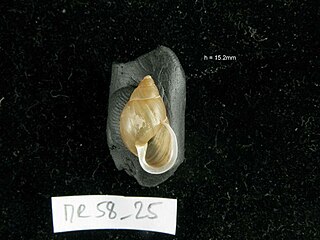
Partula taeniata, common name the Moorean viviparous tree snail, is a species of terrestrial gastropod in the Partulidae family. It is endemic to French Polynesia.
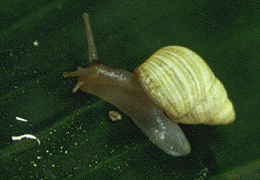
Partula is a genus of air-breathing tropical land snails, terrestrial pulmonate gastropod mollusks in the family Partulidae.
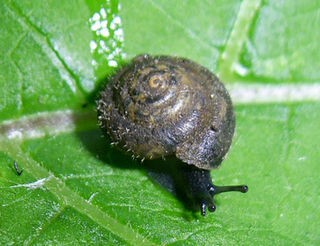
Pseudotrichia rubiginosa, sometimes known as the "German hairy snail", is a species of air-breathing land snail, a terrestrial pulmonate gastropod mollusk in the family Hygromiidae, the hairy snails and their allies.

Pomacea glauca is a species of freshwater snail, an aquatic gastropod mollusk in the family Ampullariidae, the apple snails.
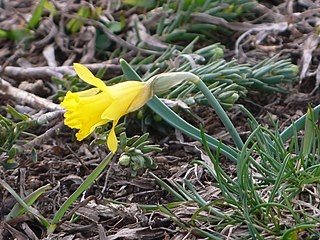
Narcissus asturiensis, the pygmy daffodil, is a perennial bulbous plant native to the mountains of North Portugal and Spain, where it grows at altitudes up to 2000 m (6000 ft). As of March 2022, Kew sources consider the correct name to be Narcissus cuneiflorus.
The Amargosa springsnail is a snail in the family Hydrobiidae. It is endemic to the Amargosa River drainage of the southwestern United States. The small snail is known to occur in several near-brackish springs, including the type locality of Saratoga Springs in Death Valley.

The Malayan snail-eating turtle is a species of turtle in Malayemys genus of the family Geoemydidae.
The western falanouc is a rare mongoose-like mammal endemic to Madagascar. Until recently, the eastern falanouc was the only recognized species in the genus Eupleres. In 2010, Goodman and Helgen provided morphological evidence showing the two falanoucs are each a separate species and are found in separate geographical locations. E. major is larger and browner compared to E. goudotii and has a diet consisting mainly of invertebrates such as worms, snails, and slugs.











